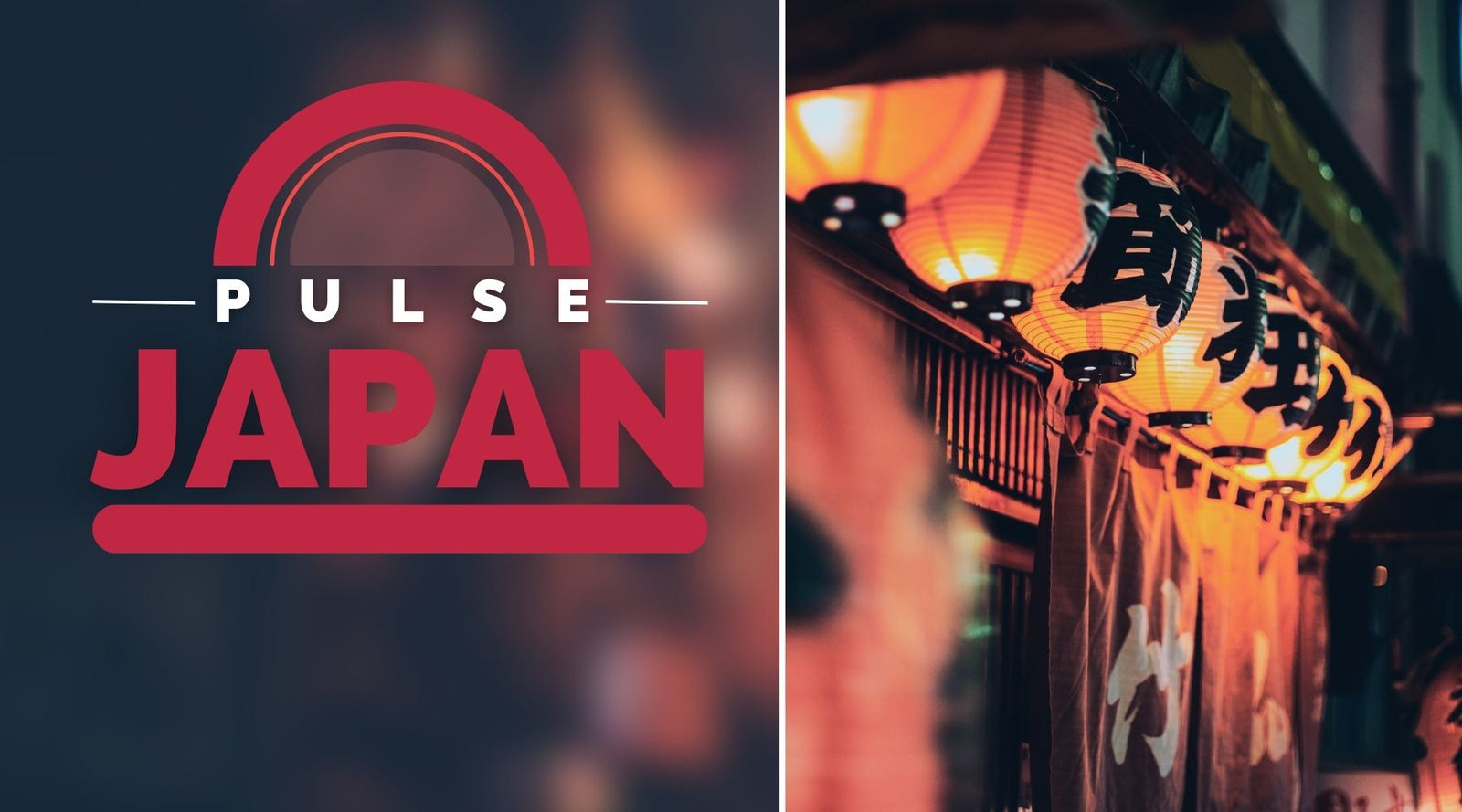Navigating Japanese Websites: 4 Essential Tips for Foreign Internet Users

Japan has a unique digital ecosystem with its own set of popular websites and platforms. As of May 2024, the top websites in Japan include Google with 6.43 billion monthly visits, followed by YouTube with 2.48 billion visits, and Yahoo! Japan. Other notable mentions include Ameba, a leading blogging platform, and social media apps like Line and Twitter, which are widely used for communication and entertainment (Standard Insights).
While the most visited websites in Japan include global giants like Google and YouTube, the local digital services differ significantly from their Western counterparts in terms of design, functionality, and user engagement. For instance, Ameba, Japan’s most popular blogging platform, offers features tailored to Japanese users, such as detailed customization options and compatibility with Japanese emoticons and stickers.
One of the most distinctive aspects of Japanese websites is their design, which can often appear cluttered and text-heavy to Western eyes. According to (Info Cubic), Japanese sites commonly utilize busy layouts filled with small graphics, vibrant colors, and flash animations. This design philosophy is rooted in the Japanese market's demand for detailed and comprehensive information, reflecting a cultural preference for risk-aversion and thoroughness (Medium).
Unlike Western websites that emphasize minimalist design and the intuitive flow of information, Japanese websites aim to present as much information as possible in a single view without requiring the user to scroll (Strikingly). This approach caters to an older audience and aligns with the Japanese ethos of maximally utilizing space.
Moreover, the integration of cute characters and mascots, known as "yuru-chara," is a common feature in Japanese web design. These elements add a touch of familiarity and friendliness, making the online experience more engaging and personable. Advertisement-heavy layouts and the use of bright, contrasting colors are also prevalent, ensuring that websites capture and maintain user attention.
Japanese online services have another distinctive trait: the seamless blend of virtual and real-world interactions. Examples include services such as "Ameba Gold," a virtual currency used on (Ameba), which bridges online and offline activities, enhancing user engagement.
As we delve deeper into navigating Japanese websites, understanding these unique attributes will help in making sense of their structure and functionality. This foundational knowledge is crucial to engaging with Japanese online communities and navigating these spaces efficiently.
Overcoming Language Barriers
Navigating the Japanese web space as a non-native speaker can be daunting. There's a good chance you'll encounter language barriers that may hinder your browsing experience. Fear not! Here's a guide to help you overcome these barriers, from utilizing browser extensions to mastering basic Japanese phrases.
Browser extensions can be your best friend when it comes to translating content on Japanese websites. Here's a step-by-step guide on how to use some of the most effective tools:
-
Google Translate Plugin:
-
Go to Google Translate in your browser.
-
Click on the "Websites" tab at the top.
-
Enter the URL of the Japanese website you want to translate and set the original language to "Detect language."
-
Click "Go" and the website will be translated to English (or your preferred language) instantly Google Translate.
-
-
TranslatePress:
-
This is a browser add-on that seamlessly translates Japanese websites into English, right at the browser level.
-
To use TranslatePress, you'll need to install it from their official website.
-
-
Yandex Translate:
-
Similar to Google Translate, Yandex Translate has been reported as very accurate for Japanese-to-English translations.
-
You can access it by visiting Yandex Translate and entering the web page URL you want to translate.
-
Kanji characters are one of the most challenging aspects of the Japanese language. Fortunately, tools like Rikaichan can help:
-
Rikaichan:
-
This Firefox and Thunderbird extension allows you to hover over Japanese words and get instant dictionary entries. It's especially useful for beginners who need assistance with kanji. You can install it from the official Firefox add-on site.
-
Rikaichan even offers a feature to translate simple phrases and idioms immediately.
-
-
Rikaikun:
-
For Chrome users, Rikaikun offers similar functionality to Rikaichan, allowing you to hover over kanji and get a quick translation.
-
It's available as a Chrome extension.
-
While these tools can make reading Japanese much easier, it's important to use them as an aid rather than a crutch to ensure you continue to learn and remember kanji.
Knowing a few basic phrases can go a long way in helping you navigate through Japanese websites. Here are some essential ones:
-
Hello - こんにちは (konnichiwa)
-
Thank you - ありがとうございます (arigatou gozaimasu)
-
Please - ください (kudasai)
-
Excuse me / I'm sorry - すみません (sumimasen)
-
Yes - はい (hai)
-
No - いいえ (īe)
-
How much is this? - いくらですか (ikura desu ka)
-
Help! - 助けて (tasukete)
Familiarizing yourself with these phrases can make your browsing experience smoother and more enjoyable. You can find additional useful phrases in articles like this one from Grasshopper Adventures (23 Basic Japanese Phrases).
These tools and tips should greatly add to your ability to navigate and enjoy Japanese websites.
Utilizing VPN Services
Navigating through Japanese websites and online communities often requires overcoming regional content restrictions. Utilizing a Virtual Private Network (VPN) can give you the flexibility to access Japan-specific content while ensuring your privacy and security online. Here, we outline how to effectively use VPN services to unlock region-restricted content, obtain a Japanese IP address, and protect your online activity.
A VPN makes it possible to view content that is usually restricted to users within Japan. Whether you want to watch Japanese TV, enjoy local streaming services, or simply browse Japanese websites, a VPN can make it happen.
-
Choose a VPN Provider: Select a reputable VPN service with Japanese servers. NordVPN and ExpressVPN are great choices, known for their extensive server network and strong security features.
-
Install the VPN: Download the VPN software or app on your device. It is straightforward to set up, with most providers offering applications for Windows, Mac, iOS, Android, and even browsers.
-
Connect to a Japanese Server: Open the VPN app, log in, and select a server located in Japan. This action will change your IP address to one based in Japan, making it appear as though you are browsing from within the country.
-
Access Content: With your new Japanese IP address, you can now visit geo-blocked websites and use services like Netflix Japan, Abema TV, and Yahoo Japan with ease.
Obtaining a Japanese IP address is crucial for accessing Japanese-specific services and content from abroad. Here’s a step-by-step guide to achieve this:
-
Sign Up: Register for a VPN service that supports Japanese servers. ExpressVPN suggests a straightforward three-step process: sign up for the service, download the app, and connect to a Japanese server.
-
Login and Connect: After installation, log into the VPN application and navigate to the server list to find a Japan-based server.
-
Enjoy Japanese Content: Connect to the Japanese server, and you’ll instantly obtain a Japanese IP address. This will allow you to bypass regional restrictions and enjoy content and services exclusive to Japan.
Apart from accessing region-specific content, using a VPN significantly enhances your online privacy and security. Here are the main benefits:
-
Encryption: VPNs encrypt your internet traffic, protecting your data from potential hackers. Your browsing history, personal information, and online activities remain confidential and out of reach from malicious actors NordVPN.
-
Masked IP Address: By masking your IP address, VPNs make it difficult for websites and online services to track your real location. For example, when connected to a Japanese server through a VPN, websites will recognize your IP as being from Japan, giving you access to Japanese content while keeping your actual location hidden Eventshakuba.
-
Secure Connection: Establishing a VPN connection creates a secure tunnel for your data to travel through, making it nearly impossible for third parties to intercept your information. This is particularly important when using public Wi-Fi, as unsecured networks are a common target for cyber-attacks.
Using a VPN is not just about accessing content, but also about ensuring your privacy and safety in an increasingly digital world. Get your VPN service, connect to a Japanese server, and enjoy the world of Japanese content while staying protected online.
As you immerse yourself in Japanese online experiences, knowing how to understand and navigate the unique website layouts will make your journey much smoother.
Navigating Japanese Website Layouts
Navigating Japanese websites can be quite an adventure, especially if you're accustomed to Western web designs. Understanding the common design elements, familiarizing with Japanese web conventions, and using visual cues can significantly enhance your browsing experience. Let's dive in!
Japanese web design is renowned for its vibrant and eclectic style. Unlike the minimalistic and spaced-out approach often seen in Western websites, Japanese sites embrace a cacophony of colors and information.
-
Color Palettes: Japanese websites love using a wide variety of colors. You might see neon, pastel, and bold colors all on the same page, creating a visually stimulating experience. This diversity in color choice is intentional and reflects a broader cultural appreciation for vibrant and diverse aesthetics (Humble Bunny).
-
Text Density: One striking feature of Japanese web design is the high text density. Japanese websites often pack a lot of text into a small space. This higher density necessitates the use of larger fonts and generous white spacing between elements to ensure readability and clarity (Bootcamp UX Design).
-
Whitespace Usage: While Western designs use whitespace to give content room to breathe, Japanese websites use it to compress information together, creating a sense of density and immediacy. This approach makes it easier for users to access a lot of information at a glance (Bootcamp UX Design).
Japanese web design also reflects cultural philosophies and practical necessities.
-
Information Overload: Japanese culture values having quick access to large amounts of information. Therefore, Japanese websites tend to be information-dense, with everything from images to text boxed into compact spaces. This design choice, although potentially overwhelming at first, allows users to see most of the relevant information without navigating away from the main page (Bootcamp UX Design).
-
Vertical Layouts: You'll often find that Japanese sites prefer vertical layouts over the horizontal ones common in the West. Items are stacked vertically, leading to long scrolling pages. This method ensures that content remains logically structured and easily accessible (Bootcamp UX Design).
When navigating Japanese websites, visual cues can be incredibly helpful.
-
Icons and Graphics: Japanese sites often use a myriad of icons and graphics to guide users. These visual elements are not just decorative; they serve functional purposes such as indicating different sections or highlighting important information.
-
Highlighted Text and Banners: Look for brightly colored text and banners, which generally denote important announcements or call-to-actions. These elements are purposefully eye-catching to guide user attention effectively.
-
Boxed Content: Many Japanese websites organize their information within neatly packed boxes. These boxes help segregate sections of content, making it easier to navigate through the dense information (Bootcamp UX Design).
Understanding these fundamental design elements, conventions, and visual cues will make your browsing experience on Japanese websites much smoother. By recognizing these patterns, you'll navigate more efficiently and appreciate the unique approach Japanese web designers take to convey information.
Finding your way around Japanese online communities next will further enhance your understanding and participation in the digital world of Japan.
Engaging with Japanese Online Communities
Navigating the Japanese internet landscape can be thrilling yet daunting, especially when it comes to engaging with online communities. This chapter will guide you through the essentials of finding language exchange partners, participating in Japanese forums, and understanding the unique etiquette and cultural considerations in these interactions.
Connecting with native speakers is an excellent way to practice your Japanese and immerse yourself in the culture. Various platforms make this easier than ever. Here’s a breakdown of some popular options:
-
HelloTalk: Dedicated to language exchange, HelloTalk lets you connect with Japanese speakers who want to learn your language.
-
Tandem: Similar to HelloTalk, Tandem pairs you with language partners for mutual learning.
-
Langmate: Designed specifically for Japanese speakers and learners, Langmate emphasizes cultural exchange.
-
ConversationExchange.com: This site has a sizable user base in Japan and offers different ways to engage, from face-to-face meetups to email exchanges (StoryLearning).
These platforms let you practice your conversation skills and help you find people with similar interests. Just remember, patience and politeness go a long way in building meaningful connections.
Once you've made some connections, participating in forums and social media can deepen your immersion. Here’s how you can get started:
-
2chan (also known as 5chan): This is akin to Reddit in Japan—a place where users discuss a wide range of topics from daily life to niche interests (Reddit).
-
Twitter: Like in the West, Twitter is extremely popular in Japan. It’s a great platform to follow trends and join conversations.
-
LINE: This messaging app is ubiquitous in Japan and often serves as a mini-social network with posts, stories, and group chats (FluentU).
Understanding the etiquette and norms within these platforms is crucial.
Adhering to cultural norms and etiquette can make a huge difference in how you’re perceived in Japanese online communities. Here are some tips to keep in mind:
-
Respect Privacy: Japanese people value their privacy highly. Don’t press for personal information too soon. Instead, let your relationship develop naturally over time Quora.
-
Formal Language: While chatting casually can build rapport, using respectful language—especially when you’re new to a community—is a good practice. Simple phrases like "よろしくお願いします" (yoroshiku onegaishimasu, or "please treat me kindly") can show your respect.
-
Be Patient: Don’t expect instant replies. Japanese users may take longer to respond, and pushing for quick communication can come off as pushy.
-
Avoid Sensitive Topics: Steer clear of controversial subjects such as politics or personal finances until you’ve built a strong rapport.
Building a genuine relationship online can lead to deeper cultural understanding and even lifelong friendships.
Engaging with Japanese online communities opens up a world of opportunities to practice the language, understand cultural nuances, and make meaningful connections. By navigating these spaces respectfully and thoughtfully, you’re well on your way to becoming a part of these vibrant digital circles.










































Dejar un comentario